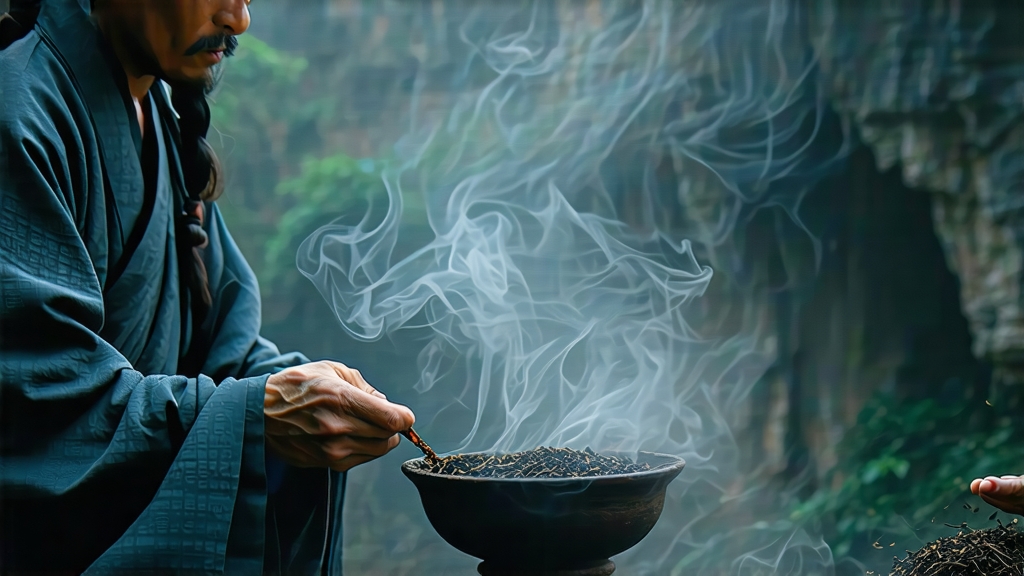
Ask most tea lovers to name the first black tea ever created and they will probably shrug; mention Lapsang Souchong, however, and eyes light up with images of camp-fires and whisky-laced evenings. This small-leaf black tea from the granite gorges of the Wuyi massif in north-west Fujian is not merely another Chinese red tea; it is the primordial black tea, the prototype that inspired every later variety from Keemun to Assam and Ceylon. Its birth during the late Ming dynasty (circa 1567–1610) was accidental: passing armies delayed the annual green-tea harvest, forcing villagers to speed-dry leaves over available pinewood to meet impatient Dutch traders. The resulting liquor—brick-red, honey-sweet and laced with unmistakable pine smoke—became an overnight sensation in Amsterdam and, soon after, London. In the early Victorian era “bohea” (the corruption of “Wuyi”) dominated global tea sales; the East India Company even dispatched botanist Robert Fortune to smuggle Lapsang Souchong plants and craft secrets to India in 1848, laying the genetic groundwork for the Indian tea industry.
Today the name covers two distinct styles. The traditional “smoked” version, still produced in Tongmu Guan, the protected core of the Wuyi reserve, is withered over embers of local Masson pine, rolled, oxidised fully, then finished in bamboo baskets suspended above a slow pinewood fire. The slower the firing, the subtler the smoke; top lots receive up to twelve hours of gentle smouldering that fixes a cool, resinous aroma reminiscent of lapsang resin and dried longan. A newer “unsmoked” or “zhengshan xiaozhong” follows the same orthodox steps but is dried with hot air, yielding a maltier, cocoa-rich cup that showcases the native Xingcun Xiaozhong cultivar without the campfire cloak. Both styles share a slender, jet-black leaf that carries flashes of golden tip when picked early, and both must be grown within the 600–1,200 m microclimate of the reserve to earn the coveted “zhengyan” (original rock terroir) seal.
Processing begins before dawn in late April. Only the standard two-leaves-and-a-bud pluck is accepted; anything coarser would blunt the tea’s natural sweetness. The leaves are spread 3 cm deep on bamboo trays set over a shallow pit of glowing pine embers—temperature held at 28 °C, humidity at 65 %. As they wither, the raw leaf loses its grassy edge and acquires a faint scent of cured bacon. Rolling follows, 45 minutes of gradually increasing pressure that ruptures cells and initiates oxidation. Once the leaf turns a uniform mahogany, it is broken up and left to ferment for 3–4 hours in cedar-lined crates covered with wet cloth; here, the magic of theaflavin formation turns astringent catechins into rounded, wine-like pigments. The final drying is the critical differentiator: smoked lots are placed on wire mesh tiers inside a brick kiln, while smouldering pinewood chips beneath release a cool, aromatic smoke that drifts upward for six to ten hours. Masters gauge readiness not by clock but by sound—when the rustle of a handful of leaves resembles that of dry cereal, the tea is done.
To brew Lapsang Souchong well, treat it like a peated single-malt: respect the smoke, but chase the sweetness beneath. Use soft water at 95 °C and a 1:50 g/ml ratio—say, 4 g of leaf for a 200 ml vessel. A gaiwan or small Yixing teapot brings out layered complexity. Rinse once, then infuse 8 s, 12 s, 20 s, 40 s, 90 s, adding five seconds for each subsequent pour. The first liquor glows like antique copper and delivers a top note of pine resin that quickly yields to dried lychee, roasted sweet potato and a lingering cocoa finish. The second infusion is often the most balanced: smoke retreats, malt steps forward, and a cooling camphor sensation appears at the back of the throat. By the fourth steep the cup is almost burgundy, tasting of dark honey and saddle leather, proof that great Lapsang evolves rather than fades.
Professional cupping follows a 3